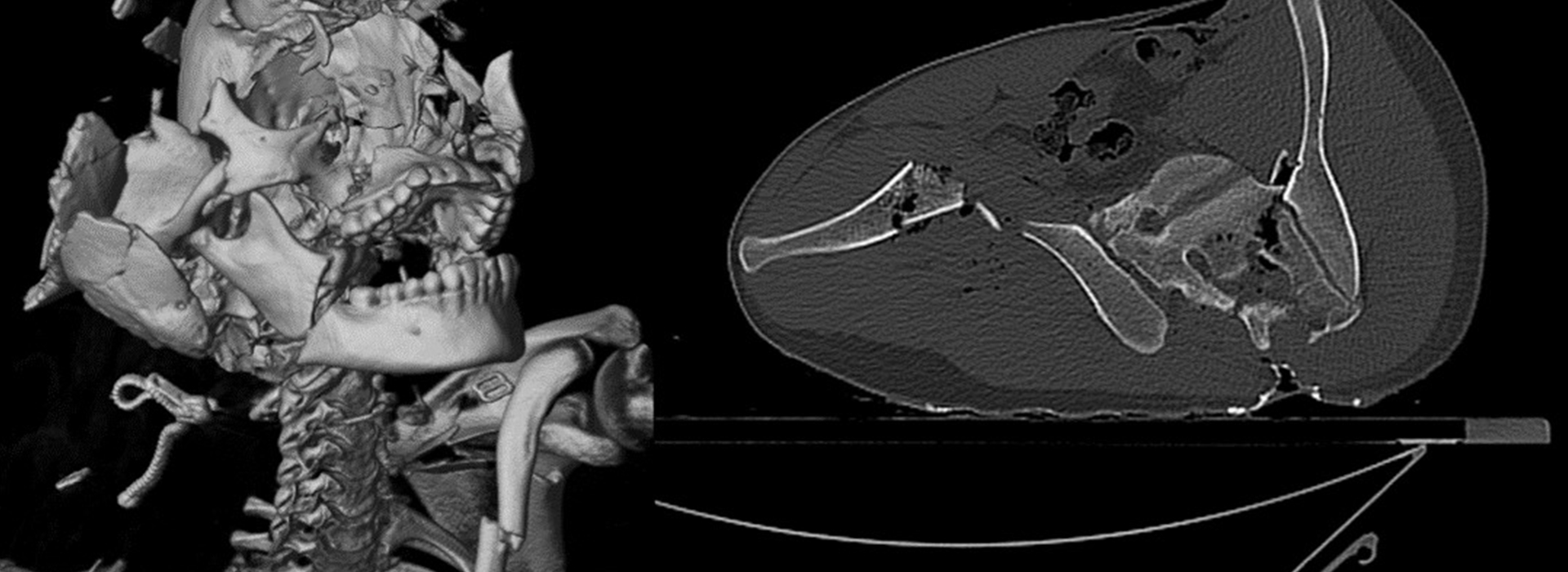This webinar originally occurred on May 4, 2021
Duration: 1 hour
Overview
This webinar introduced participants to the use of PMCT in the diagnosis of blunt force trauma. PMCT scan may be used to diagnose fatal trauma in certain situations, allowing an external examination with postmortem CT to supplant an autopsy, which may better honor religious and cultural requests of grieving family members. Non-suspicious, traumatic deaths, such as motor vehicle collisions, are such an example. Additionally, PMCT often provides additional documentation of internal injuries where fatal injuries are obvious on external examination.
Participants were introduced to the PMCT appearance of skeletal and organ blunt force injury in the medical examiner setting. More specifically, the discussion included, but was not limited to: skull fractures, intracranial hemorrhage, vertebral fractures, rib fractures, hemothorax versus other pleural fluid collections, and liver injuries. Additionally, the limitations of CT examination were discussed, including the types of injuries where CT is less sensitive.
Finally, participants were introduced to examples of the value of PMCT in the investigation of pediatric traumatic deaths.
Detailed Learning Objectives
- Participants will understand the benefits and limitations to the use of PMCT in the investigation of deaths involving blunt force trauma.
- Participants will be familiar with the PMCT appearance of blunt force injuries commonly encountered in the medical examiner setting, including fractures, hemorrhage, fluid and air collections, and injury to internal organs.
- Participants will appreciate how PMCT is used in the investigation of traumatic pediatric deaths.
Presenter
- Heather Jarrell, MD | Chief Medical Examiner, Director of Neuropathology, Associate Professor of Pathology
Funding for this Forensic Technology Center of Excellence webinar has been provided by the National Institute of Justice, Office of Justice Programs, U.S. Department of Justice.
The opinions, findings, and conclusions or recommendations expressed in this webinar are those of the presenter(s) and do not necessarily reflect those of the U.S. Department of Justice.
Contact us at ForensicCOE@rti.org with any questions and subscribe to our newsletter for notifications.




